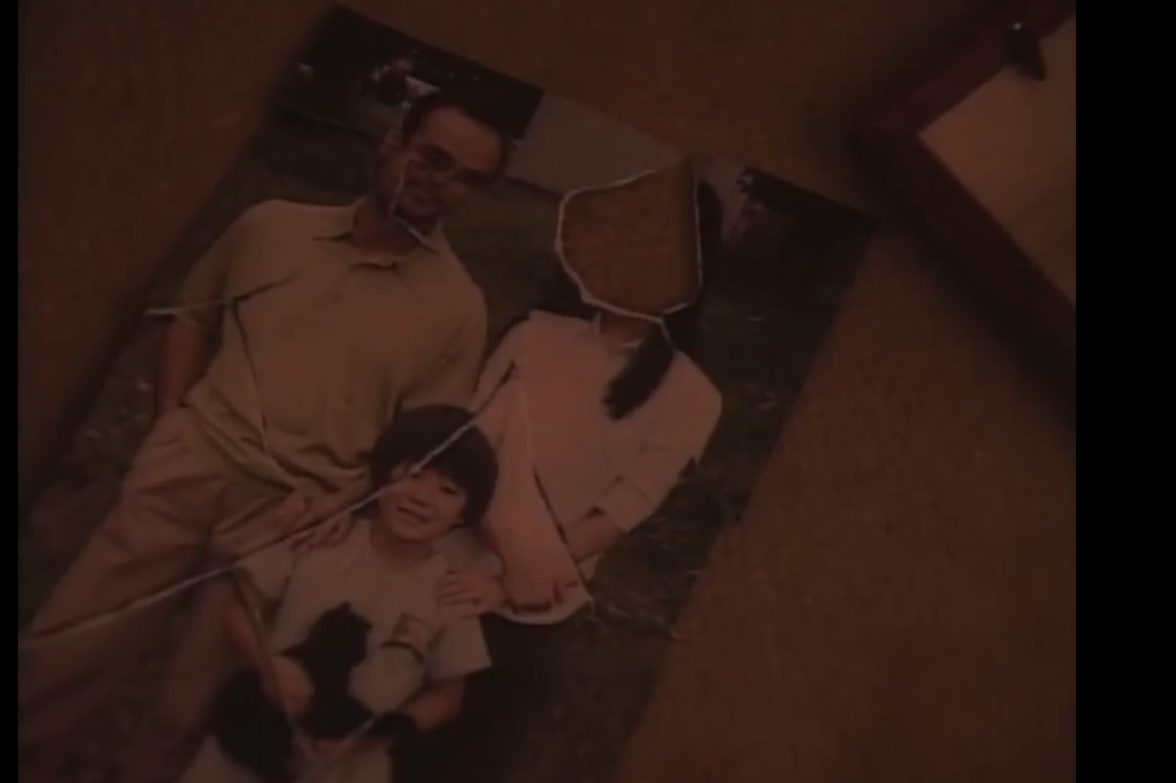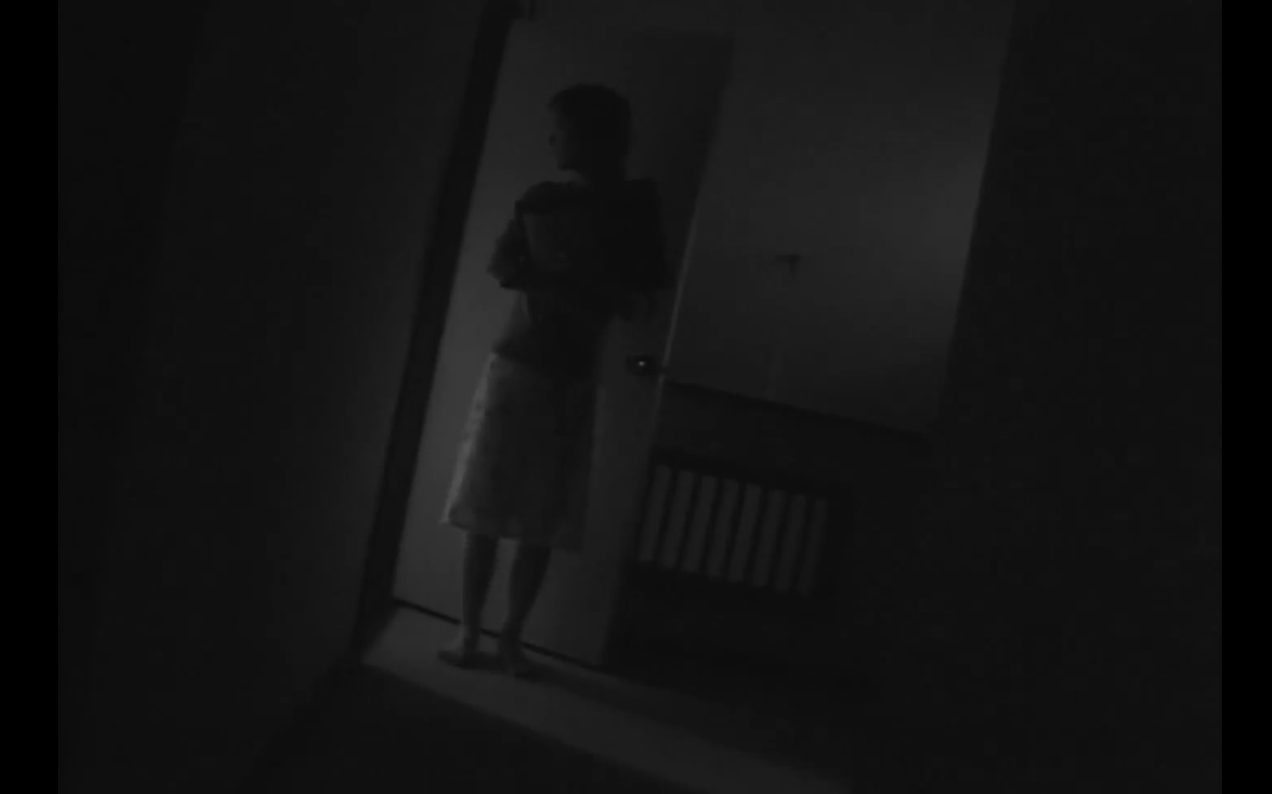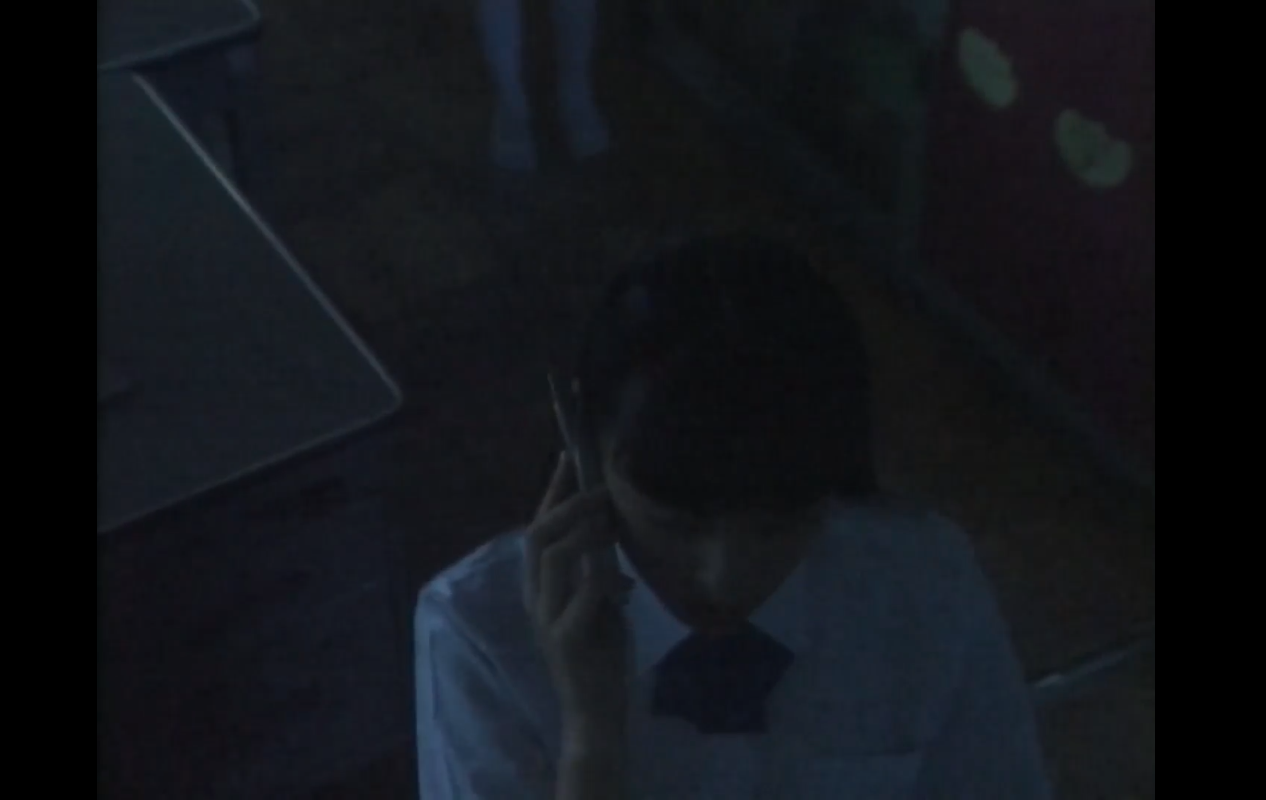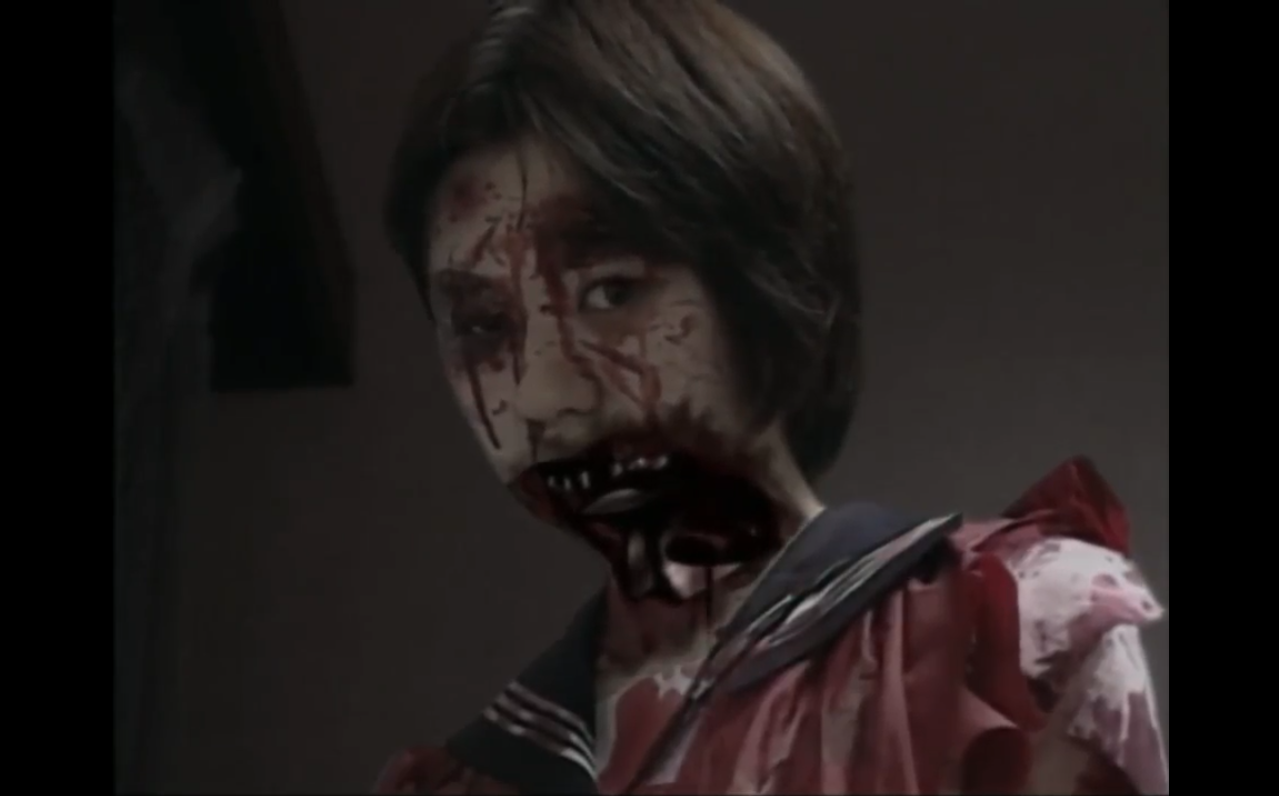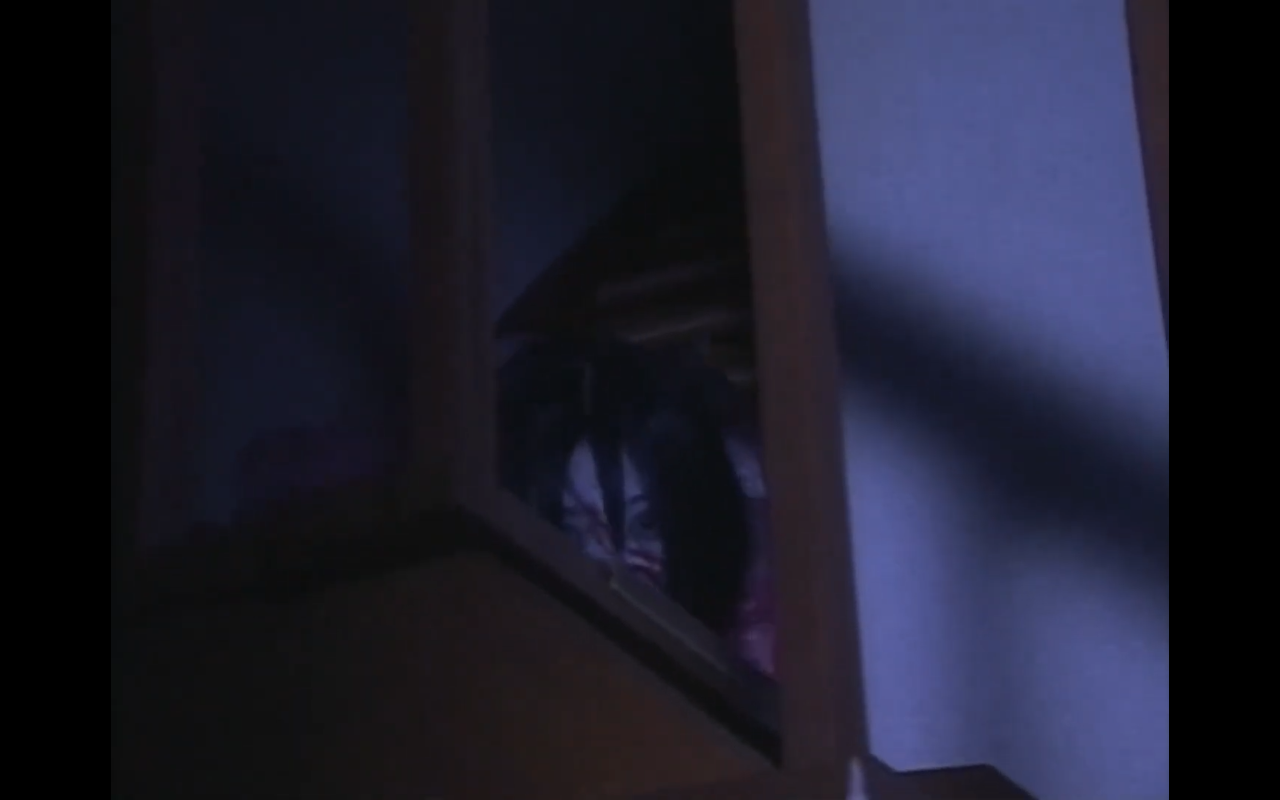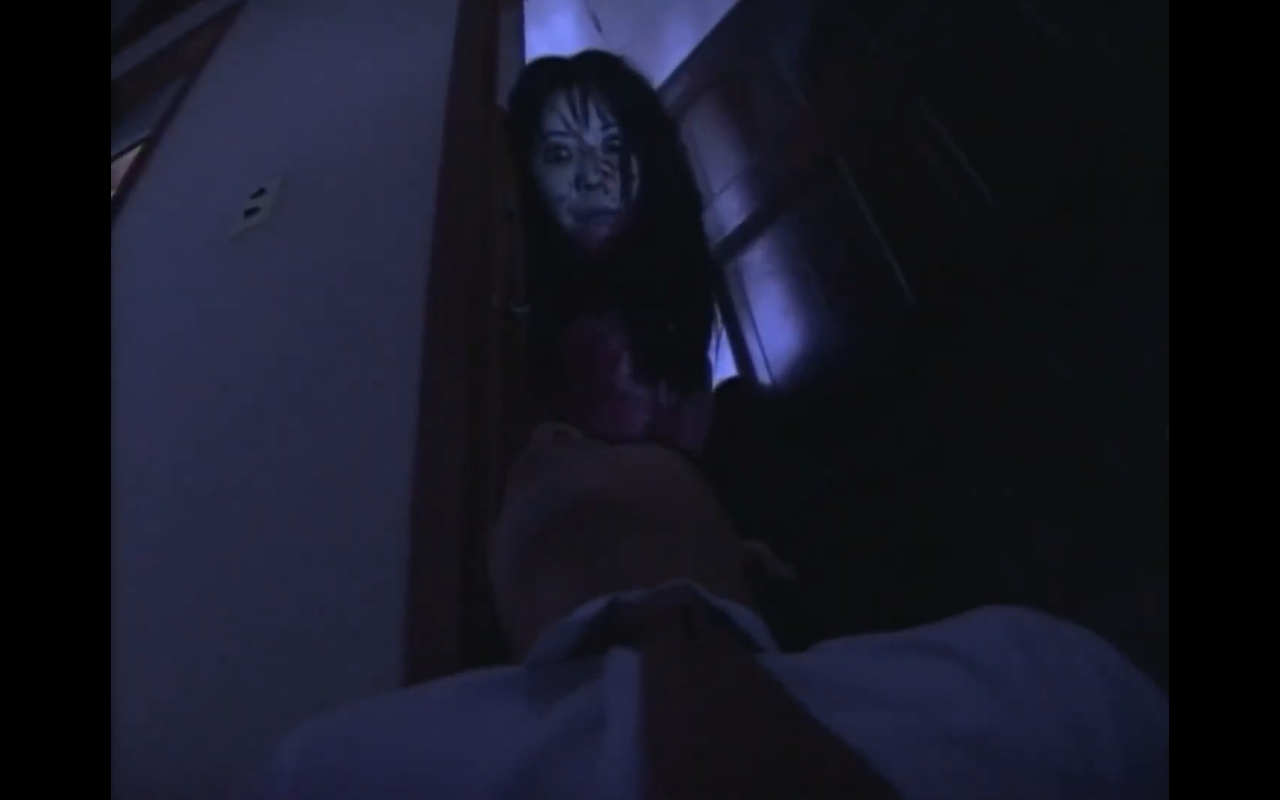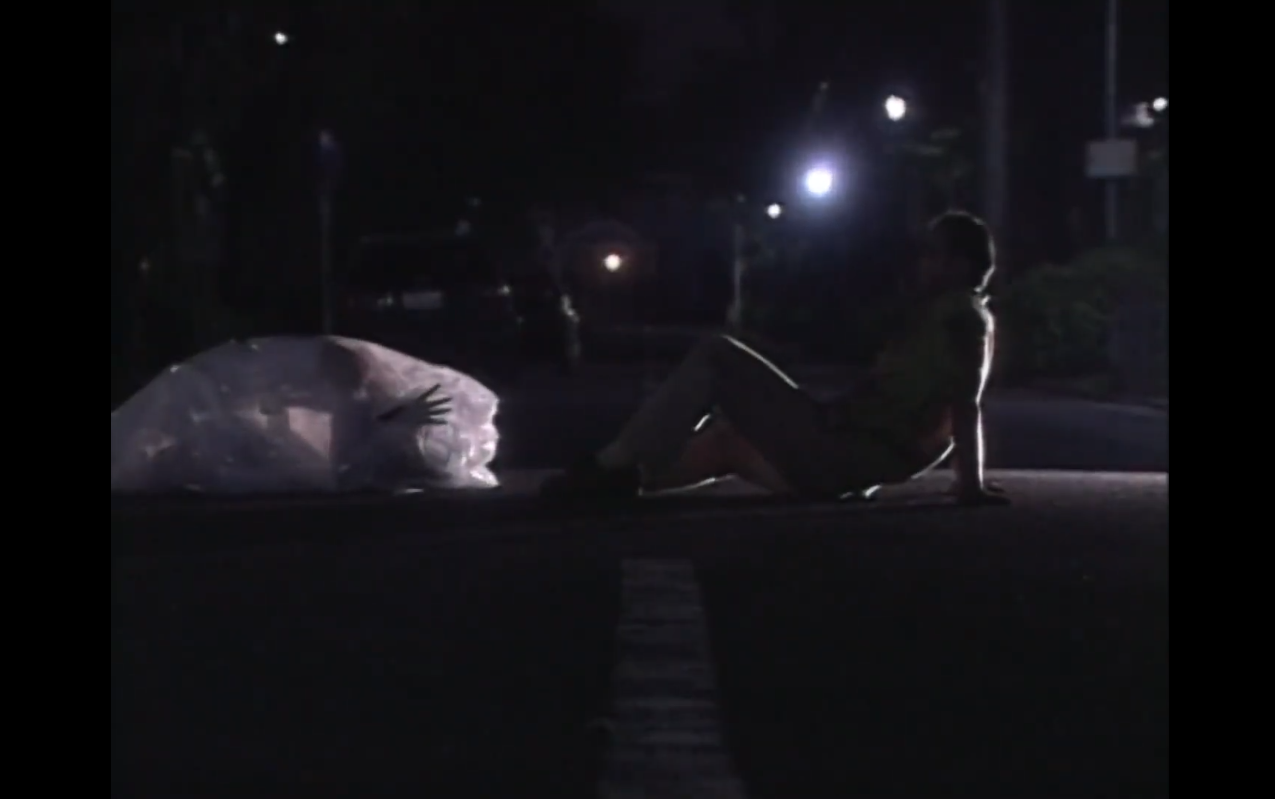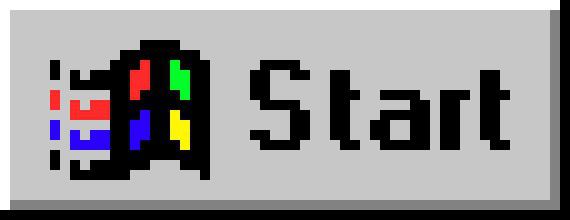I watch a lot of movies. I'm gonna try to review them! Keep in mind all reviews will contain spoilers and that I don't actually know what I'm doing. Just dicking around, I suppose- I've only taken one film class and I myself do not make movies. I also live by the Ratatouille advice: "But the bitter truth we critics must face is that, in the grand scheme of things, the average piece of junk is probably more meaningful than our criticism designating it so."
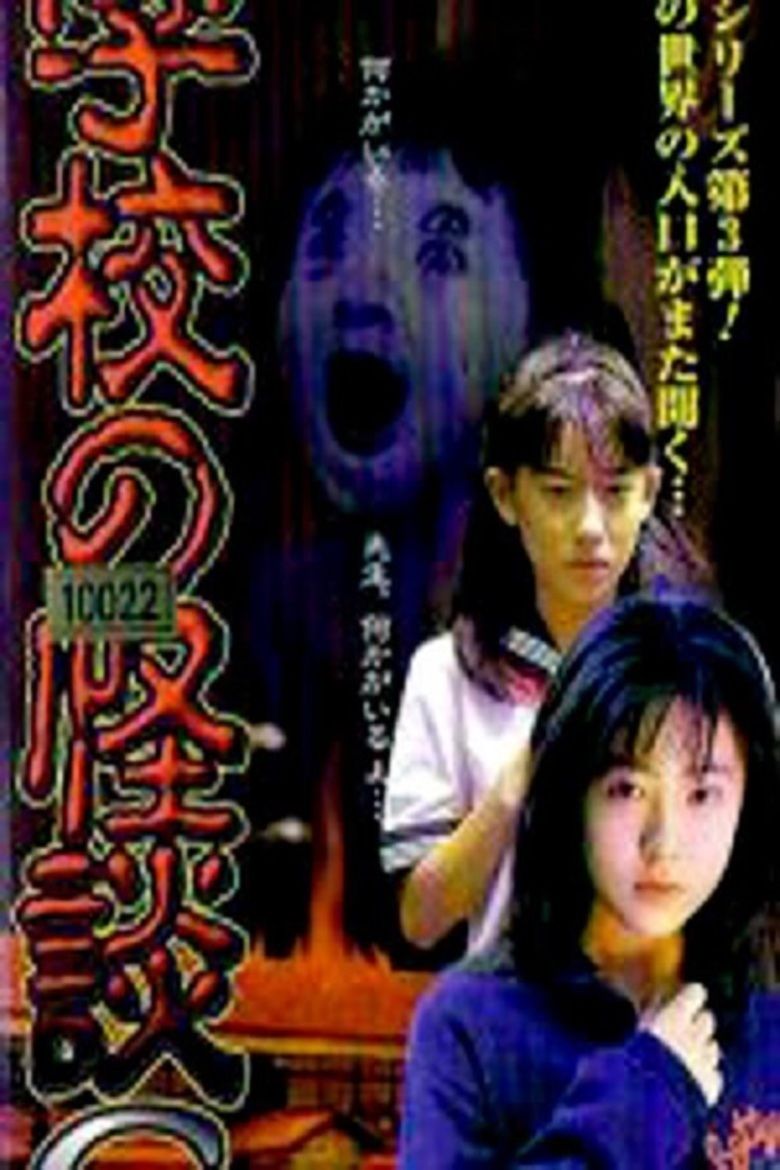
Watch these here!
Katasumi and 4444444444 are two short films from the television movie Gakkō no kaidan G, which vaguely translates to School Ghost Story G ("G" supposedly standing for "Great"). I can't find any information on the budget, but considering this was the director of the series, Takashi Shizumi's, big break as a film student, it's safe to presume that the budget was approximately enough to get some white face paint and torture some rabbits. (Not literally; they are just mishandled very badly, and you can tell the poor things are quite stressed.)
Katasumi
Short synopsis: two girls, Kanna and Hisayo, are working their summer job taking care of rabbits in the corner (hence the name, which translates to In A Corner) of a building- outside. The architecture is hard to explain; just follow me, here. Kanna cuts her finger, prompting Hisayo to go get a bandage from inside. When Hisayo is gone, Kanna is suddenly attacked by something from a nearby patch of bushes. Hisayo exits the building to find both the rabbits and Hisayo gone with nothing but evidence of the cages being violently torn open, blood splattered on some nearby bags, and one of Kanna's shoes. Hisayo then sees the living corpse of a another young girl (the comments inform me her name is Kayako) in some nearby bushes. While trying to back away, she sees that her friend, Kanna, is now similarly-white and similarly-undead.
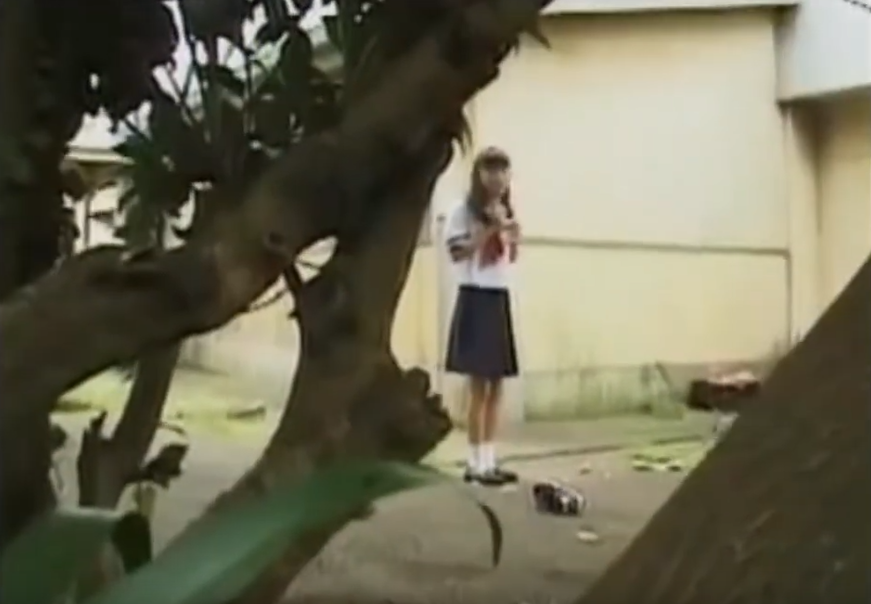
I adore the usage of this shot, which is used throughout the short film. It frames the girls--in this exact shot, the girl--between branches to give the appearance of being hunted. The camera's movements imply to the viewer that it's a first-person shot, and the lowness to the ground when combined with the sound design of breathing imply it's an animal. It sets the viewer up perfectly to be surprised when it is instead another little girl.
The acting in Katasumi is far superior to that of 4444444444, in my opinion. Kayako's is the standout, giving the impression that she was perhaps beaten to death due to her jerky movements and emphasis on unusual placement of her arms and legs, as well as the usage of jutting out her elbows. However, I find Hisayo's low-key response refreshingly realistic, because some people do react to terror like that: backing away, staying still, and having no idea what to do. The final shot of her accepting she's going to die is also real as fuck for me. I often do that in nightmares, and in my single near-death experience, I did the exact same thing. Kanna is... also there, frankly. She's a kid and it's a straight-to-DVD three-minute short film, so whatever.
4444444444
Short synopsis: a boy, Tsuyoshi, who seems to be slightly older than Kanna and Hisayo were is riding a bike next to an apartment complex when he hears a phone sitting atop a pile of junk ringing, so he stops to get it. The caller is number 4444444444, and when he answers, all he hears is catlike noises on the other end- a sort of mix between meowing and growling. He hangs up in frustration, explaining it isn't his phone. It begins ringing again immediately, and in curiosity, he sits down to answer it. After more unhelpful questioning, he becomes increasingly paranoid, looking around and asking questions such as, "Are you nearby?" Finally, he asks, "Are you watching me?" A voice not within the phone responds, "I am." Tsuyoshi looks in surprise to find a little boy, Toshio, painted white seated next to him, scratching his knees. As Tsuyoshi boggles in shock, Toshio spits out a dark liquid and grins at the camera as a cat yowls and the camera zooms in on his face.
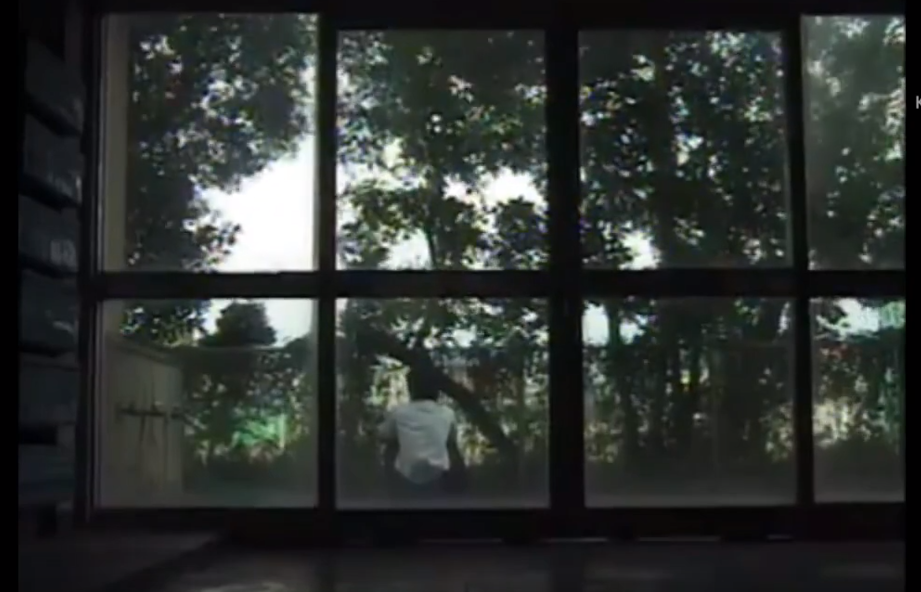
The bars of the window are used to frame Tsuyoshi in a way similar to that of the branches in the first short film. Additionally, they're what allow us to get an insight into the abandoned building, and more than that, emphasizes the idea that Tsuyoshi only thinks he's alone.
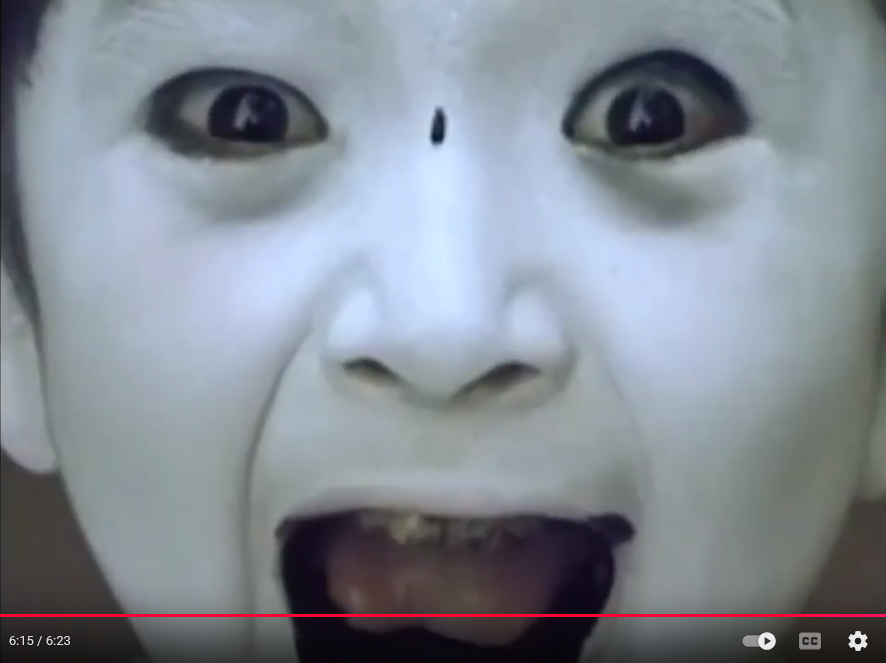
Ah, this infamous silly-ass shot. Oh, 90s and 00s, how you adored your harsh zoom-ins and violin shrieks. Honestly, I think this is charming- it's of its time and very much of a film student.
Conclusions
These two films form the prequel to Ju-On: The Curse, which is the film series that the Grudge is from. Overall, they're well executed considering their budget and having to use young adults/children as actors. The ideas are unique--fun fact: the ghosts are painted white because the director was scared of kabuki as a child--so I'm excited to see where the next movie takes me!
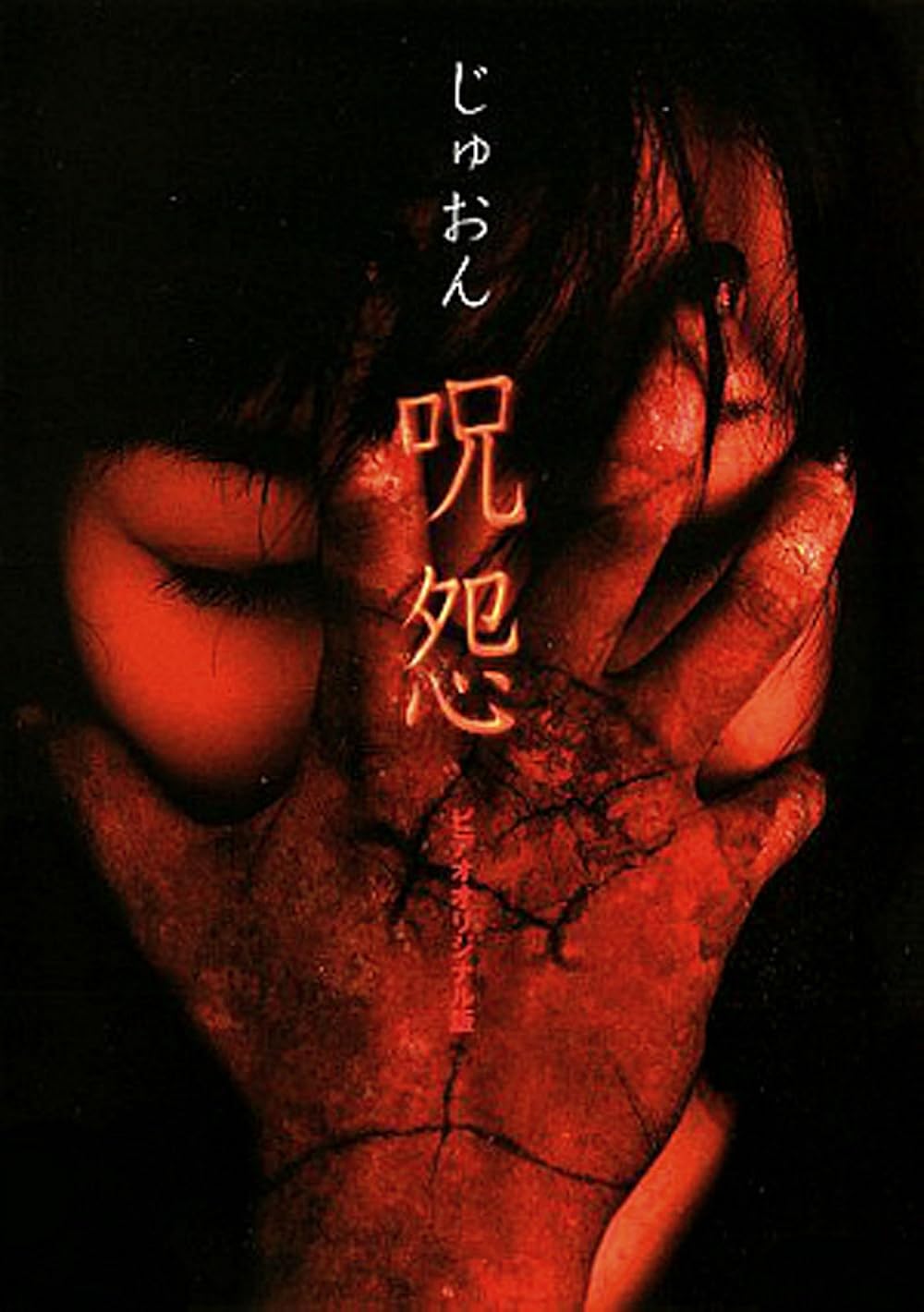
Short Synopsis: The movie starts with a teacher leaving his pregnant wife to go check on one of his students, who has stopped coming to school. The student, Toshio Seiki, refuses to speak to the teacher, forcing him to wait until his parents are home. Meanwhile, in an identically-layed out house, a pair of teen girls chat about their boyfriends until one of them, Kanna Murakami, has to leave to go feed the rabbits at school. The other, Yuki, chats with Kanna's brother, Tsuyoshi Murakami, who is leaving for school to meet with his girlfriend. Yuki hears something in the ceiling, and she is killed by a ghost-white woman.
Tsuyoshi never makes it to school, and his girlfriend wanders around, looking for him, before seeing Toshio, painted white with black lips, and hiding under a table. Her phone rings from the number 4444444444, and when she tries to get it, she grabs Tushio's ankle instead. We then move onto two PIs who are investigating the corpse of Hisayo Yoshida, one of the girls who was supposed to feed the rabbits. She is dead, and there was also a jaw bone found at the scene.
Lo and behold, back at home, Ms. Murakami greets a disheveled Kanna and is horrified to find that her daughter's jaw has been ripped off. She is also clearly dead.
Back with Mr. Kobayashi, he wanders through the unsettling house and finds a diary by the lady of the house, Kayako, about her obsession with him, how she wants him to love her. He then finds Kayako's corpse in the ceiling. Downstairs, where he is trying to get Toshio out of the house, he receives a phone call from one Takeo Seiki, who claims he had "taken care of" his wife and son before "taking care of" Kobayashi's wife and unborn child. We see Seiki in the booth, laughing with the fetus carved from her womb in his hand. Meanwhile, Kobayashi is horrified to find Kayako's corpse still active. Seiki dies at the hands of the corpse in the bag he was carrying as well- which the Wikipedia page says is also Kayako..? Sure.
The final act of the movie deals with a real estate agent and his spiritually-sensitive sister. While going over the house, they establish that the first part of the movie actually came after the second part- the Murakamis had moved in after the Seikis. The sister implies heavily that the real estate agent shouldn't sell the house to anyone, but he does anyway. The movie ends with the new couple inside the house, and the wife has been possessed by Kayako.
Review
The tension builds slowly in this movie. At first, I was fascinated that this sparked a franchise, especially considering how most of its "kills" are people gasping and then hard-cuts away. No surprise for a direct-to-VHS movie, of course, but when we pick back up with Kobayashi, things start to click into place. All of the previously-senseless homicides are slowly given context until you finally learn what happened: the child has been dead the whole time, and in Saeki's mind, it's all Kobayashi's fault.
This ties into the themes played into throughout the movie, which is relationship discord. At first, it's just a bunch of silly teens who are talking about their love lives, but as the movie progresses, the severity of the scope is increased. The implied loveless relationship is all-but-canonized when Kobayashi calls his wife to tell her he'll be home late again, which slowly spirals as he finds the journal to read the thoughts of a woman completely obsessed with him. This parallel continues as he receives a phone call from Seiki--the same method he used to inform his wife as to his lateness--and Seiki himself draws parallels. A bit direct? Yes, but in a movie this convoluted, it's refreshing.
One detail I liked about this movie is how heavily it's based on ignorance of the violence that happens around us- Kobyashi wants to help Toshio, but it's revealed to have been when it's too late. Kanna's mother doesn't realize she's fucking DEAD until she sees that her child's jaw has been ripped off. Nobody realizes Tsuyoshi didn't go to school except his girlfriend. Even at the end, when Seiki is beating the corpse he has in a bag, a man walks by- and just hustles down the street to get away from the lunatic. I think it ties thematically to the idea of domestic violence, particularly against women and children- in Japan, where unaddressed domestic violence is a huge issue.
Shots I Enjoyed CW: Gore
Overall, this movie is hugely impressive, especially considering its budget. The plot is haphazard, thrown together, and a bit nonsensical, but it's a movie that uses its strengths well. The makeup is out of this world for a production with little budget, and the concept is sufficiently horrifying- the idea that hatred can spread into a place like a fungus, branching out along an invisible network nobody can track. The retroactive reveal is good, too--albeit executed confusingly--and really underlines and clarifies the movie's themes about domestic issues not being noticed until it's too late.
hey man what are you doing here there isn't any content yet











 You are an idiot!
You are an idiot!




